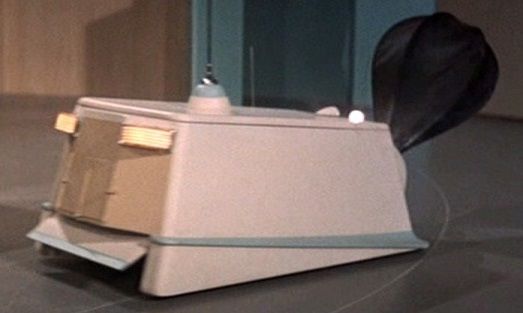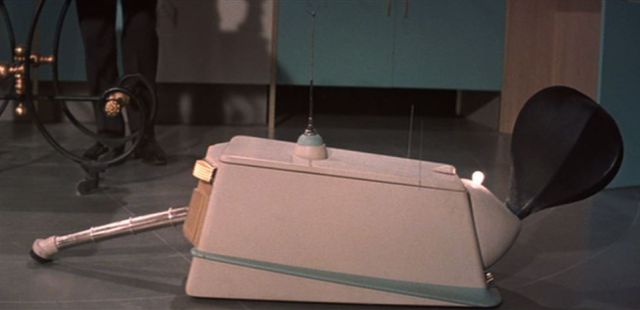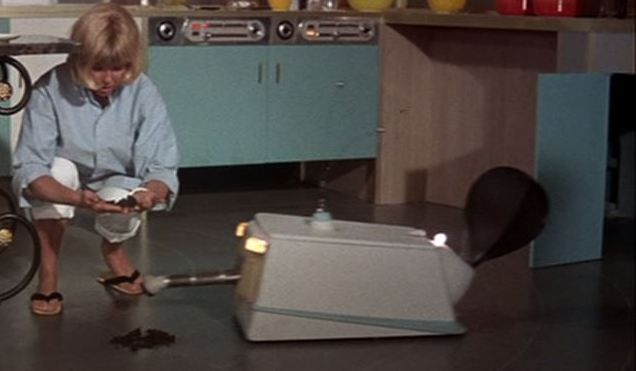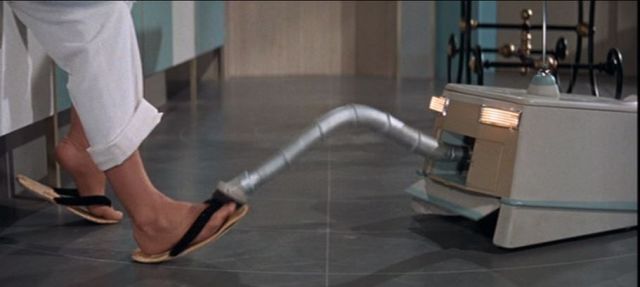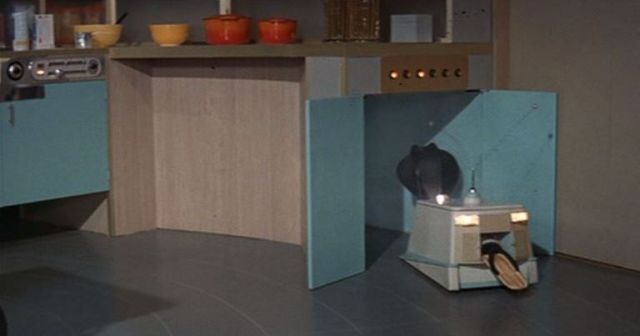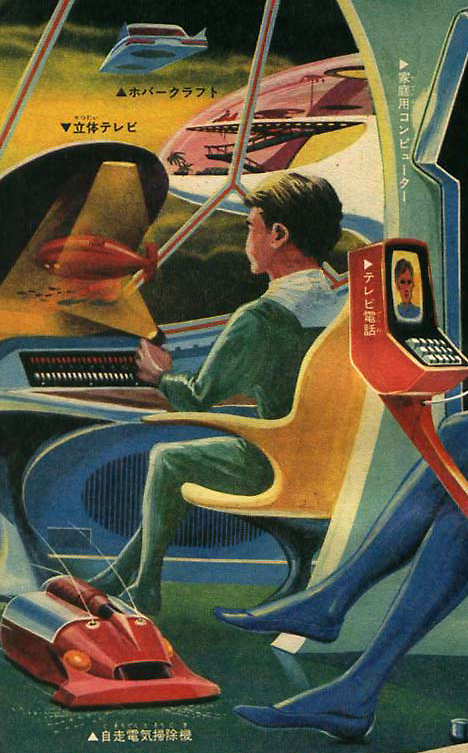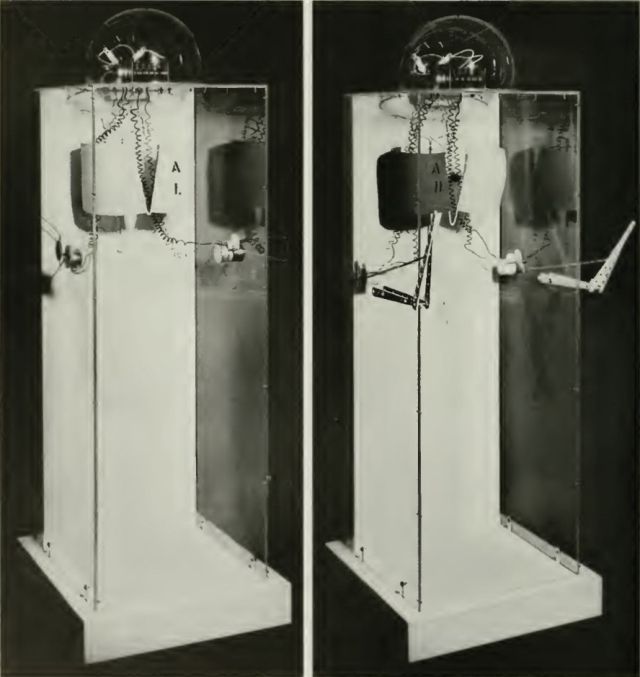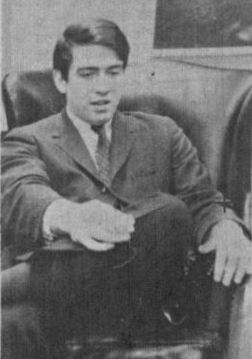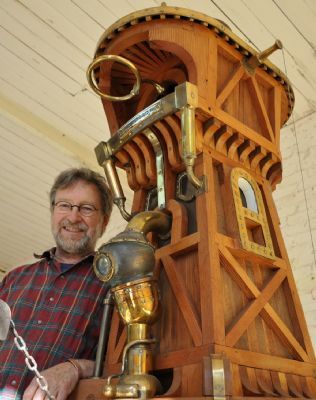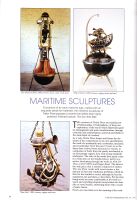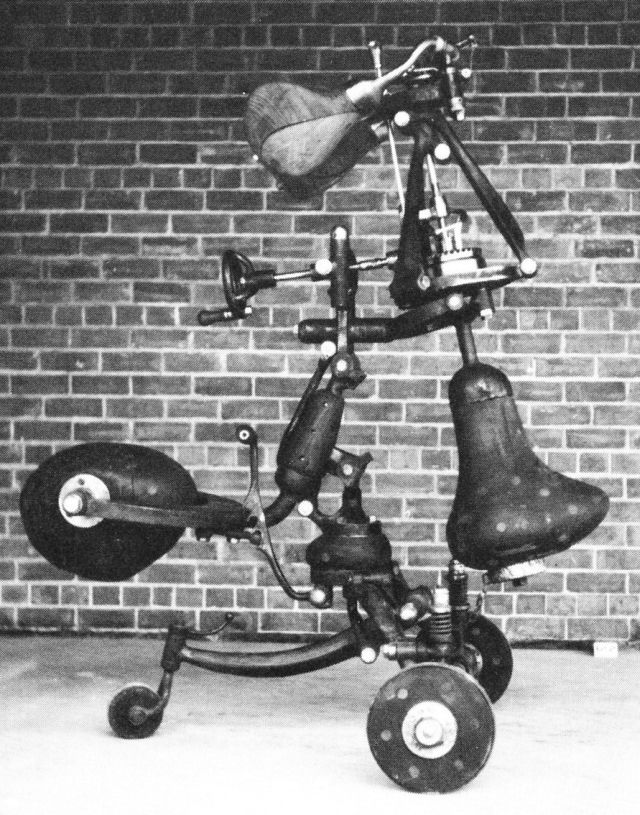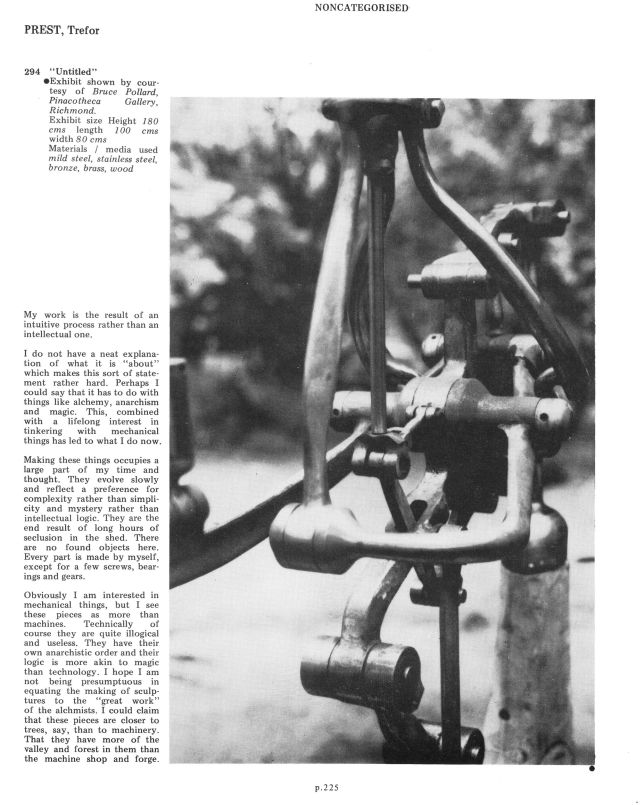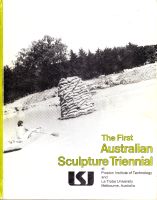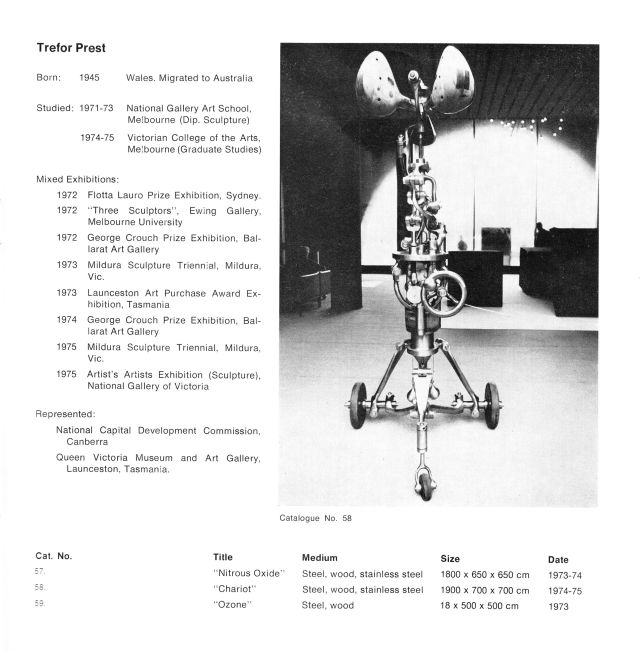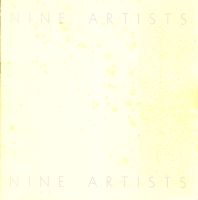The robots that are in this category of my blog are those that look and attempt to behave like human beings according to their creator's abilities and available technologies. Although I'll use the word "humanoid", words such as "humaniform" and "anthropomorphic" tend to be used as well. My focus is also on Robots at the beginning of the ‘Electric Age’. Whilst I have an interest in automata, this blog will not talk about clockwork automata unless necessary by context.
Whilst at this introductory stage of the topic, I would like to introduce some basic language, or nomenclature around our robotic friends. I intend on using the names contemporary of the times, eg Automatons, Mechanical Men, then Robots. It’s probably my hang-up but it concerns me when I see headlines like “da Vinci’s Robot” , or “Robots of the 19th Century”.
When researching the etymology of robots, I can’t do much better than quote from the book by Isaac Asimov and Karen Frenkel, “Robots – Machines in Man’s Image”:
THE ORIGIN OF ROBOTS, 1985 p15-21
ETYMOLOGY OF THE WORD ROBOT
Just as technology changed man’s ability to create devices in his own image, it filtered into definitions of those devices. The evolution of automaton definitions, for example, reflects changes in the ways “self-movement” could be achieved. Attitudes toward new technologies also permeated some definitions. The origin of the word robot was itself a comment on technology’s role in society. Whereas automaton definitions reflected the technology of the day, robot definitions remained vague regarding the technology required to make them run. Forty years after robot entered the English language, a definition of industrial robot finally specified what was meant technically, but a world consensus was not reached and definitions continue to vary from language to language.
Automaton is derived from the Greek words for self and move, but only a related word, automatous, appeared in a 1671 English dictionary as:
Automatons [Gk] having a motion within itself.’
Automaton did not appear in the first edition of the Encyclopedia Britannica of 1778 either, but did find its way into one of Noah Webster’s first dictionaries.
automaton n [Gk, automates; autos, self, and man, moveo. motus. The Greek plural, automata, is sometimes used; but the regular English plural, automatons, is preferable. ] A self- moving machine or one which moves by invisible springs.’
Here, self-movement was closely associated with springs, reflecting the significance of clockmaking in the history of automata. Definitions of automatic and automatical indicated that an automaton might “have the power of moving itself,” but the action was not necessarily voluntary or willed. Since automata of the day were created to amuse the wealthy, there was no reference to automata that do work. Less than twenty-five years later, however, the influence of the Industrial Revolution crept into both automatical and automaton explanations.
automatic 1: Belonging to an automaton; automatical, having the power of moving itself; applied to machinery. 2. Not voluntary; not depending on the will; applied to animal motions.
The term automatic is now applied to self-acting machinery, or such as has within itself the power of regulating entirely its own movements, although the moving force is derived from without; and to what pertains to such machinery; as, automatic operations or improvements.
Automatic arts; such economic arts or manufactures as are carried on by self-acting machinery.
automaton n [Gk, automates; autos, self, and man, moveo. motus. The Greek plural, automata, is sometimes used; but the regular English plural, automatons, is preferable. ] A self-moving machine, or one which has its moving power within itself. The moving power is usually a spring or weight, particularly the former. The term is generally applied to machines constructed so as to imitate the form and motions of men or animals.’
Here, automata were self-powered machines that produced and the technology to do so was referred to as automatic art. Power came from springs or weights, was not quite as invisible as before, and was to create animal-like movement.
The definition of automatical remained basically the same in an 1879 edition, but added that automatic machines made movements commonly made by the human hand. It is tempting to think that the editors foresaw today’s robotic arms and grippers, but the example of automatic movement that followed was instead “the automatic dividing engine,” probably a reference to Babbage’s machine.
The word spontaneous filtered into the 1879 automaton definition, perhaps because notions of “spontaneous generation” were highly disputed during this time, even though the dispute was dispelled by microbe hunter Louis Pasteur during the 1860s and 1870s.
automaton n p1 automata or automatons A self-moving machine, or one which has its moving power within itself ;— applied chiefly to machines which imitate the motions of men or animals. The term is sometimes applied to anything which has the power of spontaneous movement. “So great and admirable automaton as the world.”‘
It took over five years for the word "robot", introduced by Karel Čapek in his play R.U.R., to appear in an English dictionary. In the 1934 Webster’s it appeared as:
robot n [Czech, fr. robota work, compulsory service; akin to Oslav rabota servitude, OE earfothe hardship, labor, OHG arabeit trouble, distress, ON erfithi toil, distress, Goth arabaiths labor, L orbus orphaned, bereft—more at ORPHAN] I. In Karel Čapek’s play R.U.R. (Rossum’s Universal Robots), one of a large number of artificially manufactured persons, mechanically efficient, but devoid of sensibility; hence, a brutal, efficient insensitive person; an automaton. 2. Any automatic apparatus or device that performs functions ordinarily ascribed to human beings, or operates with what appears to be almost human intelligence; esp. such an apparatus that is started by means of radiant energy or sound waves.’
During the 1950s and 1960s, as computer technology advanced, the question arose as to whether computers, by virtue of their humanlike ability to memorize, were immobile robots. As computers became scaled down and were used to control machinery, the converse question arose— were robots merely mobile computers? Also debated was whether, in addition to duplicating human functions, a robot had to look like a human.
The debate continues today, among hobbyists who have built their own versions of what a robot should be, advertisers who have moved from traditional media to building robotlike facsimiles of products, manufacturers of personal robots that consumers can have in their homes, and manufacturers of industrial robots that toil in factories.
One hobby roboticist, Andy Reichelt, includes the human element in his definition: A robot is “an automated machine with the motor capabilities to duplicate some human motor functions or a shape that emulates the human shape.”‘
Promotional robot manufacturer J. W. Anderson, president of ShowAmerica Inc. in Elmhurst, Illinois, makes radio-controlled devices operated by behind-the-scene actors who supply voice and speech content. Says Anderson, “a promotional robot is mobile and can move among people while conversing with them and display various animated features and capabilities.”
He distinguishes his robots from Disney World’s audioanimatronic figures, like the Abraham Lincoln character, which speaks, turns, and nods, but does not walk.
While these definitions do not mention computers, personal robot manufacturers think of their devices as mobile extensions of personal computers. Some are also planning robots with computers on board. This group sees robots as both educational devices that present challenges to amateur programmers and as home entertainment. Their robots either look humanoid or are at least designed to suggest some personality.
RH Notes – 2009] It is interesting that the word "Robot" [Roboter in German] is never mentioned in the book or the film "Metropolis" at all, but "Machine Men" [MaschinenMensch in German] is.
Update: July 2012 RJH: Images of the Metropolis programme handed out for the Marble Arch Pavilion premiere in London Mar 21, 1927, recently released on the internet by a rare-books house, mention the words: Mary the "Robot", Maria the "Robot" , "Automaton", "Automaton Mary", and "Artificial Man". This programme also compares excerpts from the book with "Scenarios" (i.e. the screenplay). So whilst the book never uses the word "Robot", the Scenarios do! It's quite possible, then, that Fritz Lang was the first to connect his "automaton" to that of a "robot".
Čapek's Robots were Artificial Men, not Mechanical Men.
Capt. W. H. Richards, in 1928, announced his mechanical man Eric with "R.U.R." emblazoned on its chest. Thereafter the media largely attributed the word ROBOT to metal men, or woman as the case maybe.
Here is a graph from Google showing the usage of the word "robot" in the [mainly American] newspaper media. The peak in 1945 is to do with the German "Robot" bomb in WWII.

Qualification(s): 1. Research performed on mainly English-language sources. 2. Google Newspapers (no longer available) reflects mainly American newspapers.
Update: 8 Jan, 2011. I was re-reading Tim Hornyak's book Loving the Machine (2006) and realised he was suggesting similar concepts as me, as well as giving a Japanese viewpoint. The extract is below:
"Then call them 'Robots'"
What exactly is a robot? The word is difficult to define. The Oxford English Dictionary says a robot is "a machine (sometimes resembling a human being in appearance) designed to function in place of a living agent, esp. one which carries out a variety of tasks automatically or with a minimum of external impulse." Japan's authoritative Kojien dictionary describes a robot thus: "a complicated and elaborate manmade automaton, an artificial person or cyborg; in general, a machine or aparatus for work or control that can be made to perform automatically."
To qualify as a robot, it seems a machine's function is more important than its appearance—robots do not need to be in human form to be robots, but generally they do human work, often jobs deemed too dangerous, difficult or monotonous for us. Curiously, people can also be robots. When someone acts in a mechanical fashion, without showing emotion or sensitivity or obeying orders automatically, we might call them a robot. The word thus embraces the idea of machines behaving like humans as well as humans behaving like machines.
"Robot" was introduced by Karel Čapek, one of the most important Czech writers of the twentieth century and a prominent dissident amid the interwar rise of fascism in Europe. Like George Orwell, he was a mainstream author, a journalist and a poet who sometimes exploited science fiction motifs to express his views about technology and authoritarianism. Čapek was on summer vacation in a Slovkian spa town when he got the idea for a play about synthetic factory workers rising up against their human creators. He approached his artist brother Josef, who was holidaying with him, and said he had thought of calling his artificial laborers "labori," but this sounded too bookish. Josef, feverishly painting at the time, simply muttered through a brush in his mouth: "Then call them 'Robots.'" The word was derived from the archaic Czech "robota" meaning obligatory work performed by medieval serfs, or "robotniks." Čapek's play R.U.R. (Rossum's Universal Robots) used the familiar Frankenstein motif of human hubris producing artificial beings that become uncontrollable and violent.
The company in the play, R.U.R., mass-produces robots made of flesh and blood, not metal and electricity—that are the ultimate in efficient labor. Their inventor, old Rossum, "wanted to somehow scientifically dethrone God," as R.U.R. head Domin tells an idealistic visitor to the factory bent on liberating the robots. "For him the question was just to prove that God is unnecessary. So he resolved to create a human being just like us, down to the last hair."
But the utopian society that is sustained by worldwide robot labor has a dark side: people become sterile, robots show signs of having souls and are even being used as soldiers. When they revolt, killing all but one of the factory's managers, their leader Radius proclaims: "The age of mankind is over. A new world has begun! The rule of Robots!" Without old Rossum's secret formula, though, the robots cannot replicate themselves. In the end, the natural order is restored when two robots fall in love and are christened Adam and Eve by the sole surviving human.
Čapek later wrote that the play's aim was not to condemn technology per se but to question the idea of man becoming slave to the ascendant machine, the triumphant factory. He saw his dark play as "a comedy, partly of science, partly of truth." "We are in the grip of industrialism," he added. "A product of the human brain has at last escaped from the control of human hands."
A Word, a Phenomenon
R.U.R. was an instant success when it was staged in Prague in 1921, and earned Capek international renown with productions in New York, London and Paris soon after. The play also fueled the growth of American pulp science fiction magazines like Hugo Gernsback's Amazing Stories and their negative portrayal of robots.
Čapek's artificial workers also made a deep impression on Japanese, including Nishimura. In July 1924 R.U.R. came to Tokyo's Tsukiji Little Theater, the country's first playhouse for modern Western drama. It was titled Jinzo Ningen ("Artificial Human"), and was the venue's first work staged in its entirety. Kihachi Kitamura, a translator who saw the production, left this reflection: "I think the author's intent was to show people controlling the ultimate in science, yet not losing human love—that's where the future of humanity lies." The interest in R.U.R. led to a repeat performance at the theater two years later. The ideas in the play also helped prime Japan for its first "robot boom" in the late nineteen twenties.
Many Japanese found the concept of an artificially created human intriguing instead of terrifying, and jinzo ningen became a catchword. Čapek's influence was soon seen in Japanese literature; at first writers tended to imagine robots like Rossum's organic creations of flesh and blood, and not mechanical drones.
In August 1924, for example, a story by Shiro Kunieda appeared in Shosetsu Kodan Poketto magazine that was entitled "Tantei Kibun Ningen Seizo" (A Detective's Bizarre Tale of the Manufactured Man). It concerns a detective's discovery of a secret experiment involving an American doctor and a Japanese nurse to create, by means of using various medicines and substances, an eight-foot artificial man. Of course, the only part of the giant they cannot concoct is the heart, so they set about relieving unsuspecting people of theirs. Robot historian Haruki Inoue sees this as the first Japanese work influenced by R.U.R., although basically a retelling of it with the American in Rossum's role.
Japanese scientists were also interested in Čapek's vision. In 1926, monthly science magazine Kagaku Gaho published a special titled "A Scientific View of the World in 100 Years." Hisomu Nagai, a professor of physiology at Tokyo Imperial University who was also a proponent of eugenics, contributed an article headlined "Jinzo Ningen wa Kano ka" (Is an Artificial Person Possible?) that was illustrated with stage scenes from R.U.R.
The term "jinzo ningen" eventually became the catchier robotto (robot), which only made it into a dictionary of new words in 1928.
